Magnetic Clamping Cauls
© Frank Ford, 9/15/01; Photos by FF (A.S.I.A. Symposium, 3/21/01 & G.A.L. Convention, 7/5/01)
A few years ago we all "discovered" these Neodymium magnets. They're incredibly strong, and they have a bunch of uses for the guitar repairer. Dan Erlewine has probably found more of these uses than any of us. Here are a few of his clamping caul setups.
Here's a clamping caul with a tiny inlaid magnet. The magnet is just strong enough to the caul in position:
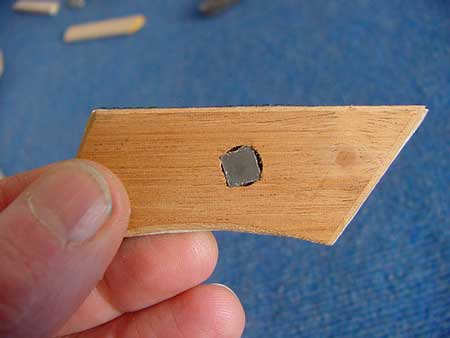
The other side of the caul has a protective surface:
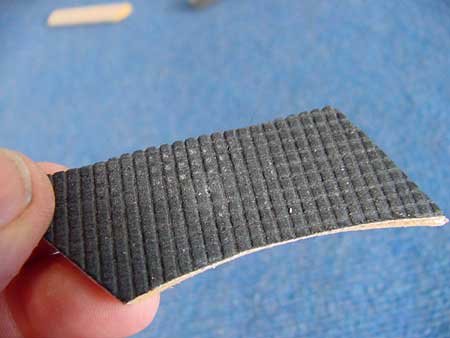
Dan sticks the caul in place:
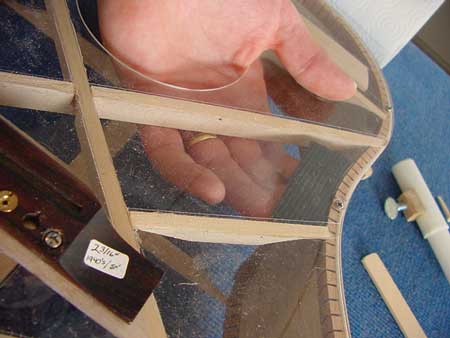
And holds it with a large magnet from the outside:
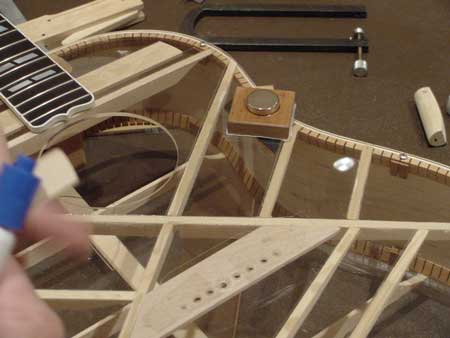
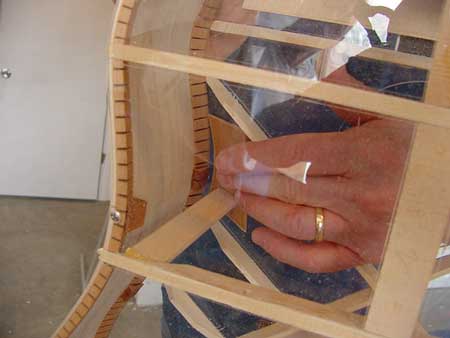
Then, in goes the prop:
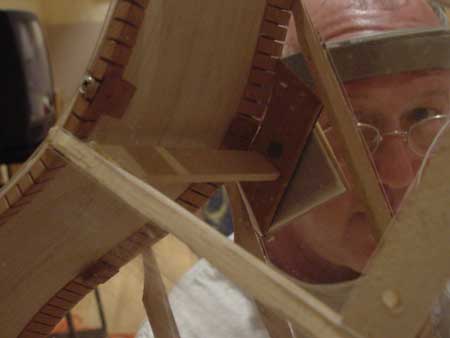
Which holds the caul, allowing the magnet to be removed.
A big clamp replaces the outer caul, providing the pressure to reglue the back brace beneath the prop:
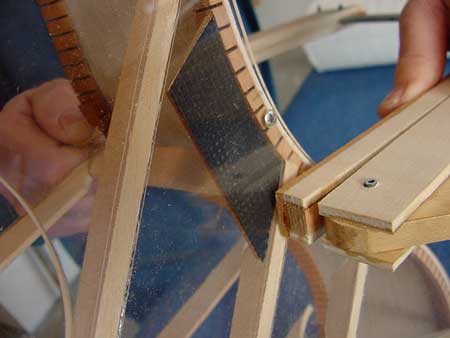
Now, if you ask me, that beats the old "double sticky tape" method most of us have used to hold the upper caul while assembling this clamping arrangement. I don't know about you, but I've left a caul or two inside a guitar after the job was done. . . .
Here's a how Dan reglues bridges:
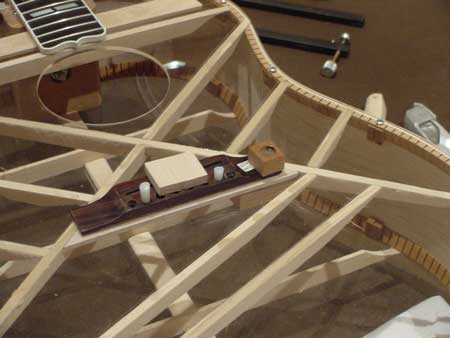
The bridge is held in position by the tapered pins stuck through the bridge pin holes. Magnets on top of the bridge hold the magnet-imbedded caul under the bridge plate.
Then, the outside magnets are replaced by clamping cauls as the clamps are added. Just to avoid magnetic conflict, Dan has replaced the steel parts of the aluminum clamps with nylon threaded rod and plastic knobs.
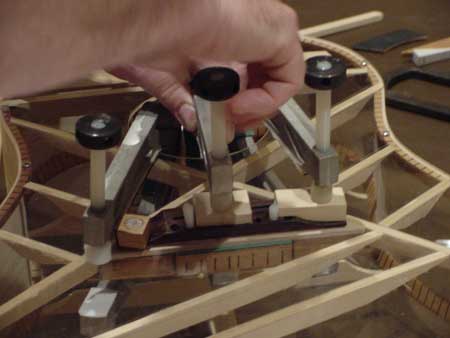
Here's my absolute favorite use for these little magnets. They're just the thing for locating parts within a guitar body. Dan is going to remove and reglue (or replace) a diagonal brace. Before starting the removal process, he positions a locating bar behind the brace. The bar is held in position by three of these strong little magnets:
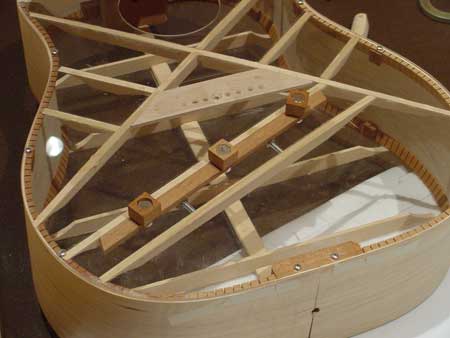
Then, when it's time to reglue or replace the brace, Dan's magnetic locating bar makes the job possible:
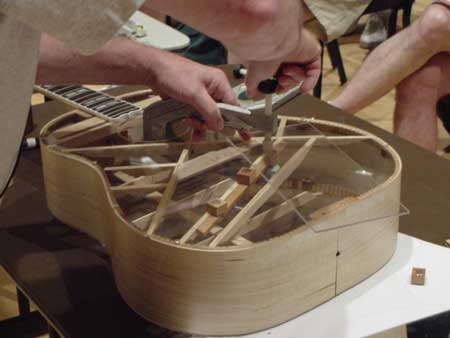
This rig is a simple caul holder. It's a big caul that spans both brace ends. Once the clamp is positioned, the upper magnet is taken off:
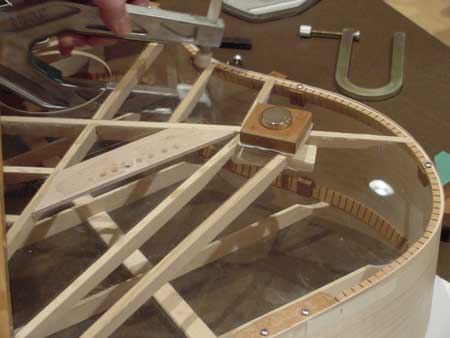
This three magnet caul is actually the clamping device for a side splint where there's no possibility of traditional clamping:
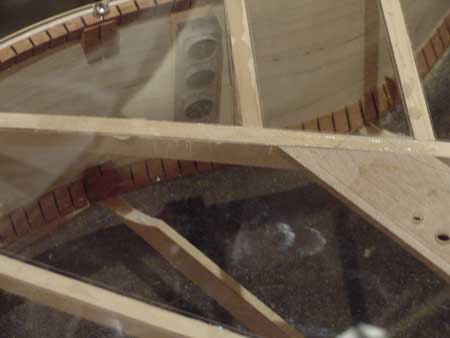
Back to Dan's Intro Page
Back to Index Page